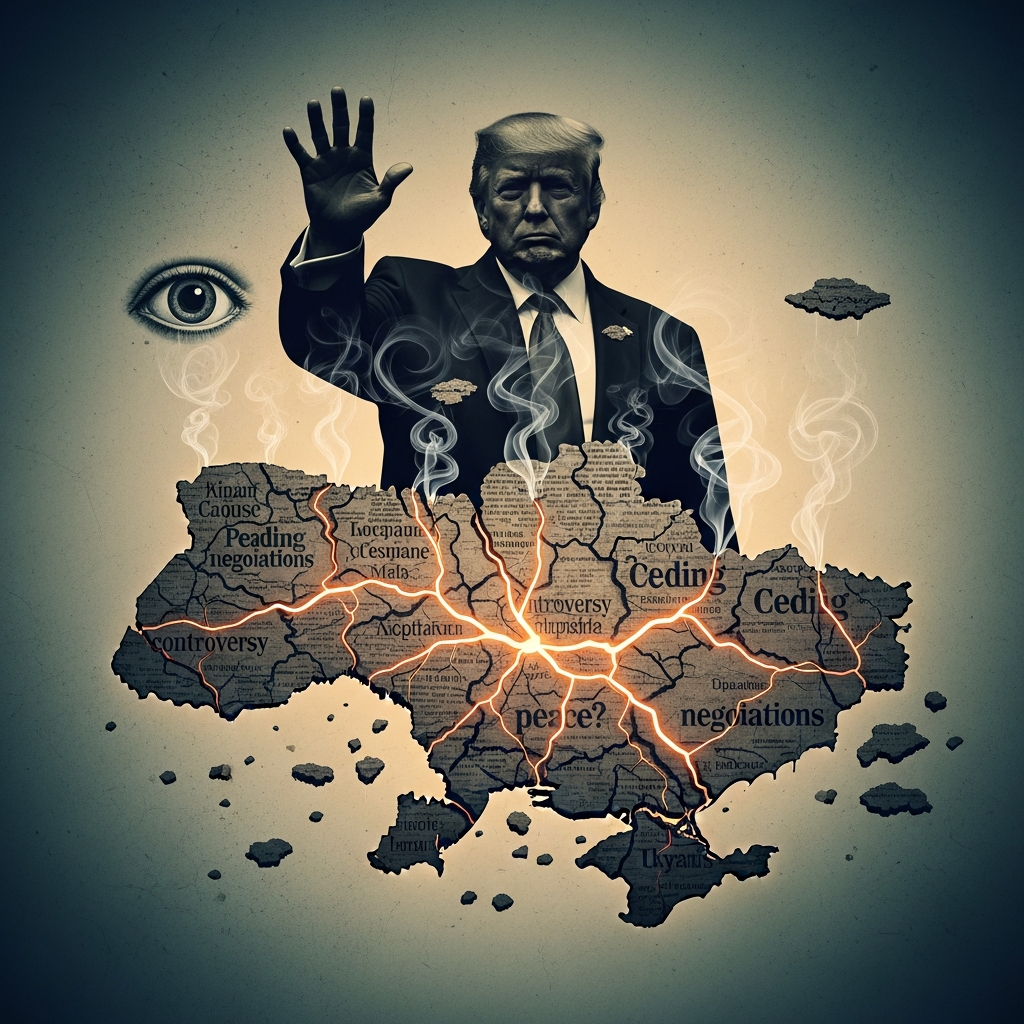The landscape for federal employee unions and their collective bargaining rights is undergoing unprecedented transformation under the Trump administration. Through a series of executive actions and legislative proposals, the administration is systematically reshaping the federal workforce, sparking intense legal battles and raising alarms about government effectiveness and worker protections. This deep dive explores the core shifts, the ongoing disputes, and the widespread impact on over a million public servants.
Unraveling the Shift in Federal Labor Relations
Since the 1960s, federal workers have held the fundamental right to unionize and engage in collective bargaining. Unlike their private-sector counterparts, government employees cannot negotiate wages or initiate strikes. However, their unions historically played a crucial role in shaping workplace policies—from disciplinary procedures and parental leave to overtime management and safety protocols. The rationale was simple: involving employees in policy decisions fosters a more harmonious work environment and, ultimately, a more efficient government.
President Trump has decisively challenged this long-standing philosophy. Asserting that federal employee unions obstruct management and pose a “danger to the country,” his administration has pursued policies aimed at significantly curtailing their influence. These actions are framed as efforts to boost efficiency and safeguard taxpayer dollars, though critics argue they are designed to silence dissent and consolidate power.
The Erosion of Collective Bargaining Rights
A pivotal moment arrived in March when President Trump issued an executive order that effectively ended collective bargaining rights for over one million federal workers across approximately 20 agencies. This was swiftly followed by many agencies halting automatic deductions of union dues from employee paychecks, a critical blow to union finances. A subsequent executive order in August expanded these restrictions to additional agencies, intensifying the pressure on labor organizations.
The administration’s “fact sheet” accompanying the initial order explicitly stated, “Certain Federal unions have declared war on President Trump’s agenda,” signaling the highly adversarial nature of the relationship. This move was not just about policy; it was framed as a direct response to unions challenging parts of the administration’s agenda.
Legal Battles and Administrative Maneuvers
Unions immediately launched lawsuits, alleging that these executive orders were retaliatory and unlawful. Initially, lower courts granted temporary halts to the March order. However, two appeals courts later allowed the administration to proceed while litigation continued, citing the president’s unique responsibility for national security. Despite initial guidance from the administration for agencies not to terminate existing collective bargaining agreements during the legal process, updated directives in recent months permitted agencies to cancel most union contracts. Notably, agreements with the National Treasury Employees Union (NTEU) were temporarily spared due to specific, ongoing litigation. According to the American Federation of Government Employees, nine agencies have already terminated their contracts. The legal saga continues, with a judge on the 9th Circuit Court of Appeals even calling for a potential en banc rehearing of the case by a larger panel.
The VA Case Study: A Glimpse into Workforce Tensions
The Department of Veterans Affairs (VA) provides a stark illustration of these changes. Sharda Fornnarino, an outpatient surgery nurse at the Rocky Mountain Regional VA Medical Center and a local director for National Nurses United, received news in early August that the VA was ending nearly all of its collective bargaining agreements. Unions were given just days to vacate their federal building offices. Fornnarino recounted the urgent weekend scramble to empty their office space.
In her union capacity, Fornnarino had dedicated time to advocating for critical workplace improvements, such as enhanced safety measures for nurses and specialized training, especially for those rotating through different departments. She pointed to successes like increased VA police presence in emergency rooms and psychiatric units, changes she believes benefited both healthcare providers and the veterans they serve. The VA, however, presented a different perspective, stating that bargaining unit employees like Fornnarino spent 750,000 hours of taxpayer-funded time on union activities last year. The agency’s press release announced that with no collective bargaining obligations, these hours could now be used “to serve Veterans instead of union bosses” – a claim Fornnarino dismisses as “propaganda.”
Uneven Application and National Security Claims
A particularly contentious aspect of the administration’s policy is the inconsistent application of its national security rationale. President Trump’s executive orders invoke a provision in federal law allowing him to terminate bargaining rights at agencies primarily focused on national security. While past presidents used this authority sparingly, Trump has applied it broadly to a diverse range of agencies, including the Environmental Protection Agency, the Justice Department, the National Weather Service, and the U.S. Agency for Global Media.
Crucially, the executive orders exclude agencies that have publicly supported the administration, such as those representing law enforcement and Customs and Border Protection (CBP) employees. Cole Gandy, an Agriculture Department employee who trains CBP workers on inspecting agricultural imports, highlights this glaring inconsistency. His union members, who identify pests found at ports of entry, have lost their bargaining rights, while the CBP employees they train, whose role is also vital for national security, retain theirs. Unions are actively leveraging these inconsistencies in their ongoing legal challenges, arguing that the true motive is political, not national security.
Beyond Unions: Broader Federal Workforce Disruptions
The administration’s approach extends beyond union curtailment to broader efforts to “rightsize” the federal government, often targeting probationary employees. In Wyoming, for instance, a wave of federal worker firings disproportionately affected individuals in their first year of employment at critical land management agencies like Yellowstone National Park and the U.S. Forest Service. Reports indicated significant cuts in IT, resource management, and wildlife divisions at Yellowstone, and dozens of positions eliminated in the Bridger-Teton National Forest.
Nationally, the U.S. Department of Agriculture confirmed approximately 2,000 probationary, non-firefighting employees were laid off, though union figures suggest a higher number. These cuts raise concerns about the degradation of public services, including trail maintenance, campground operations, and even wildfire prevention, as many general Forest Service workers also hold “red card” certifications for firefighting.
A “Brain Drain” and the Threat to Public Services
These sweeping changes are fueling fears of a significant “brain drain” within the federal government. Many workers are reportedly considering leaving public service, feeling that federal jobs are no longer desirable without the protections and flexibilities unions once afforded, such as input on telework or family leave policies. Anthony Lee, president of an NTEU chapter representing FDA employees, warns that the government is losing highly skilled chemists, toxicologists, and engineers – experts essential for ensuring the safety of drugs, medical devices, and food. He contends that this loss of institutional knowledge and subject matter expertise is already “harming the public,” challenging the administration’s belief that such experts are “quickly replaceable.”
Overall, the Office of Personnel Management (OPM) projects approximately 300,000 federal employee departures, mostly voluntary, by year’s end. While OPM Director Scott Kupor views this as an opportunity to “reward efficiency,” critics warn that such a mass exodus, particularly of senior leaders at agencies like the CDC, risks leaving federal agencies ill-equipped to provide essential services to Americans.
The Political Divide: Debating Worker Protections
The administration’s actions have ignited a fierce political debate. Congresswoman Ayanna Pressley (MA-07) vehemently condemned President Trump’s efforts, framing them as a “coordinated and shameful attack” to silence workers and consolidate “unchecked power.” She specifically opposes eliminating “Official Time” (which allows federal workers to report fraud without fear of retaliation), granting the president unchecked power to revoke collective bargaining agreements, and banning voluntary union dues deductions. Pressley argues these measures are not about efficiency or taxpayer protection, but about dismantling the only force that stands against workplace abuse – unions.
Conversely, some Republican leaders, including Wyoming’s Senators Cynthia Lummis and John Barrasso, have expressed support for President Trump’s efforts to reduce federal spending and “wasteful Washington spending.” They view these actions as necessary “rightsizing” of the federal government, though they also pledge to protect programs vital to their constituents, such as national parks and federal lands.
Shifting Federal Focus: The Immigration Enforcement Strategy
Adding another layer to the federal workforce transformation, the Trump administration is also implementing a novel strategy to bolster its immigration enforcement capabilities. This involves actively recruiting and deputizing personnel from a wide range of other federal agencies, including the U.S. Marshals Service, the IRS, the DEA, and the State Department’s Diplomatic Security Service, to support Immigration and Customs Enforcement (ICE). This initiative, detailed in DHS memos, prioritizes arrests and deportations by leveraging existing federal staff, even if their primary mission lies elsewhere. Former ICE director Sarah Saldaña described these broad directives as “unusual” for tapping agencies in such a manner. While the administration views this as a “major step in fixing” inadequate resources for apprehending individuals without authorization, it has been met with pushback from federal employees and Democratic lawmakers concerned about capacity, training, and the shifting focus of diverse agencies. This approach underscores the administration’s broader intent to re-allocate federal resources and personnel according to its priorities, further reshaping the landscape of federal employment.
Frequently Asked Questions
What specific changes has the Trump administration made to federal employee unions?
The Trump administration has implemented significant changes through executive orders, primarily targeting federal employee unions. These actions have ended collective bargaining rights for over one million federal workers across numerous agencies and led to the cessation of automatic union dues deductions from employee paychecks, significantly impacting union finances. Specific proposals also aimed to eliminate “Official Time” for union activities and grant the President unchecked power to revoke existing collective bargaining agreements, reducing the unions’ ability to advocate for their members.
Which federal agencies have been most impacted by these policy shifts?
A broad range of federal agencies have been impacted, including the Department of Veterans Affairs (VA), Environmental Protection Agency, Justice Department, National Weather Service, U.S. Agency for Global Media, and the Food and Drug Administration (FDA). The U.S. Forest Service and other federal land management agencies have also seen significant workforce reductions. Notably, the executive orders explicitly excluded agencies such as Customs and Border Protection (CBP) and law enforcement groups that have shown support for the administration, leading to accusations of uneven application of the policies.
What are the potential long-term consequences of these federal workforce changes?
The long-term consequences of these changes are a major concern. Experts and union leaders warn of a potential “brain drain” as skilled professionals, including chemists, toxicologists, and engineers, consider leaving federal service due to reduced protections and diminished quality of life benefits. This loss of institutional knowledge and subject matter expertise could severely compromise the ability of federal agencies to provide essential public services, affecting areas from drug safety and environmental protection to national park maintenance and public health. Critics argue it could debilitate government effectiveness and ultimately harm the public.
Conclusion: The Future of Federal Employment
President Trump’s administration has undeniably launched a comprehensive effort to redefine the role of federal employee unions and reshape the federal workforce. From the systematic dismantling of collective bargaining rights and the halting of union dues to broader workforce reductions and the repurposing of federal personnel for new priorities like immigration enforcement, the impact is profound and multifaceted.
While the administration champions these changes as necessary for efficiency and national security, critics, including labor leaders and congressional figures, contend they undermine worker protections, stifle dissent, and threaten the delivery of vital public services. As legal battles continue and a significant “brain drain” looms, the long-term implications for federal employees, government agencies, and the American public remain uncertain. The ongoing “Great Federal Union Showdown” underscores a pivotal moment in the history of public service, with the ultimate shape of federal employment still very much in flux.



